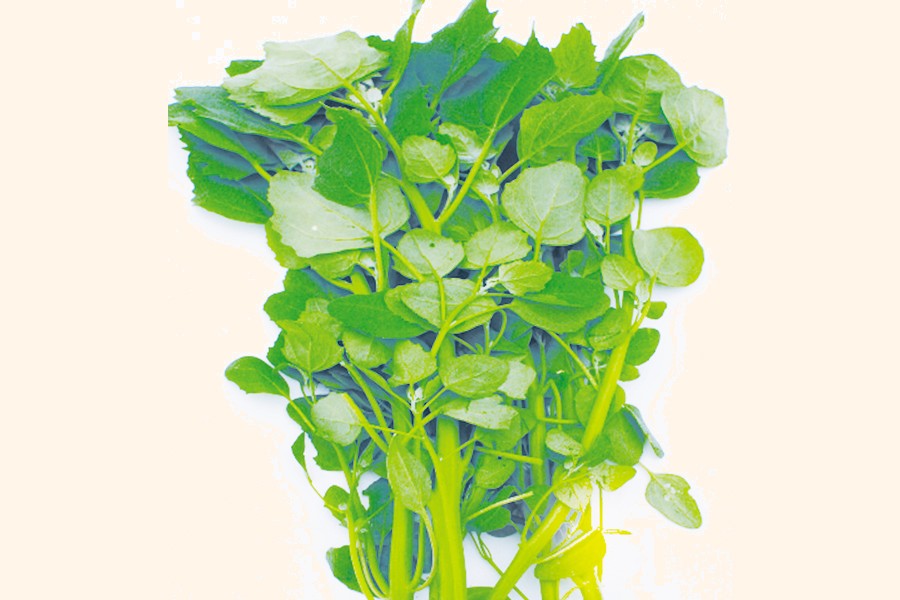
Published :
Updated :

'Bathua shak' (Scientific name - Chenopodium album; common names include lamb's quarters, wild spinach, goosefoot, and fat-hen) has been consumed in Bangladesh as a nutrient-rich, non-traditional leafy vegetable for hundreds of years. The plant is considered a weed but is consumed mainly by rural people. Recently, the plant has gained popularity in urban areas due to the recognition of its nutritional value and health benefits. In the United States, I picked bathua shak growing in the soybean and corn fields and recalled fond memories of Bangladeshi dishes. Outside Bangladesh, the plant is also cultivated and eaten in India and Nepal. Today, it is even available in local grocery stores in Canada.
Quinoa grains (Scientific name - Chenopodium quinoa) are eaten worldwide as a healthy food, considered by some as a 'superfood,' and a 21st century 'climate-smart crop.' Although it originated thousands of years ago in South America, it has recently gained worldwide attention due to its outstanding nutritional potential and health benefits. Today, Peru and Bolivia control 90% of the world's quinoa production, but cultivation occurs in over 100 other countries. Quinoa grains are gluten-free, contain higher amounts of protein, and include all essential amino acids, minerals, and vitamins. The crop also has different bioactive components beneficial to human health. Additionally, quinoa can tolerate various abiotic stresses such as drought, salinity, heat, and cold, plus, it requires less water and fertilizer to grow than similar crops.
While researching quinoa grains at Lincoln University of Missouri in 2017, I became interested in tasting quinoa green leaves due to their similarity to bathuashak (genetically cousins - a different species from the same genus). I conducted the first taste test of quinoa green leaves in Bangladeshi community by preparing them like spinach and amaranth (data shak). The taste test succeeded. Then I conducted a taste survey with more than 100 participants of different origins. The majority stated that the taste, texture, and flavor of the quinoa green leaves were equal to or better than the common leafy green spinach. Later, I investigated the nutritional content of the green leaves and compared it with amaranth (data shak), spinach, and bathua shak. The results showed that quinoa green leaves contain higher amounts of protein and lower amounts of carbohydrates in comparison. They are also higher in amino acids, minerals, and fiber; all while containing low amounts of fat. Due to the presence of high amounts of all essential amino acids, the quinoa leafy greens are categorized as a complete protein food. In addition, it also contains higher levels of potassium, manganese, and copper and moderate levels of calcium, phosphorus, sodium, and zinc when compared to similar crops.
Consumption of quinoa green leaves as vegetables is rare. Like quinoa grains, green leaves also contain nutritional and health-promoting characteristics such as antimicrobial, anticancer, anti-diabetic, anti-obesity, and antioxidant properties, and they can reduce heart disease. Green leaves are relatively easy to grow year-round (in the field, greenhouse, high tunnel/plastic house, and rooftop), with a 4-5-week harvest period. Additionally, it can be harvested from the same planting twice (cut and come again harvest). Even after harvesting green leaves once, the plants can grow and produce seeds (life cycle about 100-day) for another planting. It is an ideal leafy green vegetable crop that fits a climate-changing environment. Green leaves of quinoa can be cooked like bathua shak, spinach, data shak, and lalshak. Also, quinoa sprouts (germinated seeds) and microgreens (7-10 days old green leaves) could be eaten as a salad.
In the USA, Lincoln University of Missouri leads in the research, production, and promotion of quinoa green leaves as a nutrient-rich and health-promoting vegetable under the financial support of USDA; several Bangladeshi graduate students have been involved to date. Multiple research and popular articles have also been published.
Dr. Safiullah Pathan is an Associate Professor of Crop Science at Lincoln University of Missouri, USA. mspatha@hotmail.com.


 For all latest news, follow The Financial Express Google News channel.
For all latest news, follow The Financial Express Google News channel.